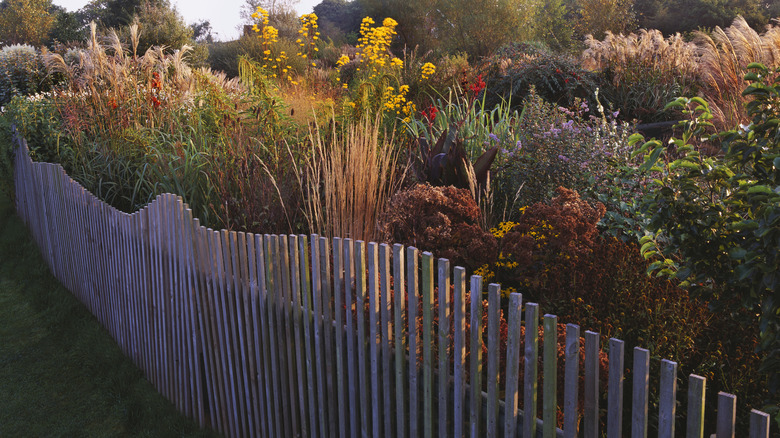
Clive Nichols/Getty Images
There’s nothing more satisfying than a nice and tidy garden, where the plants have been pruned after flowering and everything is cleaned up and ready for the next growing season. Or is there? While every garden zone has a fall to-do list, there’s a winter garden trend that is giving gardeners permission to be a little “lazy” when it comes to cleanup. Instead of rushing to prune and clean up the garden as soon as the temperatures drop, more gardeners are embracing leaving seedheads as they are through the winter and waiting until early spring. While this low-maintenance approach saves time and effort and allows you to wait until spring to do all the heavy cleaning, it also plays a big part in supporting local wildlife that visits your yard and calls it home.
By leaving your garden perennials all winter, such as coneflowers (Echinacea purpurea), black-eyed Susans (Rudbeckia hirta), common milkweed (Asclepias syriaca), and asters (Aster), they will develop seedheads that are very popular with birds during late fall and winter when food becomes harder to find. The easy trend of embracing these seedheads instead of eliminating them provides essential food and shelter for birds and other wildlife. Come spring, you can prune your plants and get your garden tidied up and ready for the new season. You’ll know you have made a difference in the ecosystem and helped your feathered friends and beneficial insects thrive.
Delaying garden cleanup until spring attracts feathered friends

Katho Menden/Shutterstock
Although many birds migrate during cold weather, not all of them do. The birds that hang out for the winter have to find food and that is where your garden comes in. Not removing the seedheads on certain seed-producing flowers in the fall provides an excellent food source for the non-migrating birds, as well as a place to shelter and get protection from any predators. If you like ornamental grasses, there are even several unique types of grass to plant in your yard that birds can’t resist. These grasses, like Gulf Muhly (Muhlenbergia capillaris), Indian grass (Sorghastrum nutans), and Northern sea oats (Chasmanthium latifolium), produce an abundance of seeds that birds love — and they provide shelter, too.
If you want to create a garden that helps the birds and wildlife in the fall and winter, you want to include a variety of flowers that are known to produce seeds that are beneficial to birds. One popular choice is the sunflower (Helianthus annuus). Sunflowers not only look beautiful, but they are a favorite of birds, especially when the blooming season is over and the seeds dry out. Some bird species you can expect to see around your sunflowers include goldfinches, tufted titmice, cardinals, and many varieties of sparrows. Some other choices that will turn your winter garden into a paradise for birds include goldenrod (Solidago sphacelata), cosmos (Cosmos bipinnatus), and the very popular coneflower (Echinacea). Coneflowers come in a huge array of colors and styles that will add color to your garden through the blooming season and feed the birds through the fall and winter.


Comments are closed.